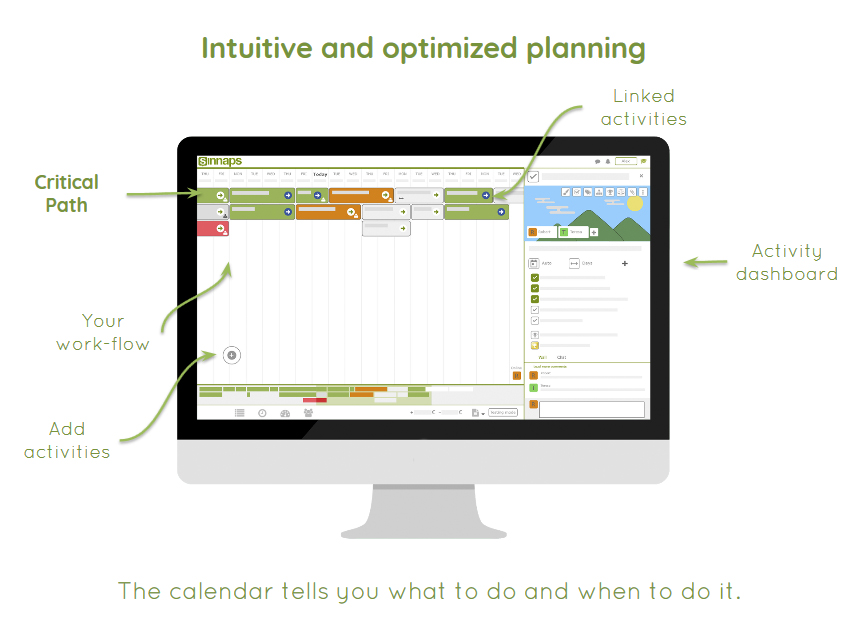There are many different types of leadership words that describe the practice. What about Laissez Faire, Authoritarian and Democratic? In this article, you will learn about these three different types of leadership and how Sinnaps, the project management software, supports your leading of a project team.
Índice
Types of Leadership: Laissez Faire Leadership
Out of all the types of leadership styles, everybody’s goal should be to avoid toxic leadership. There are different types of leadership positions and the first we will look at is the Laissez Faire style, also known as the facilitative leadership style. It is regarded as the most interesting style of leadership as it is translated from French to mean ‘let it do’.
This facilitative leadership style essentially gives employees freedom and leaves them to their own devices, a cautionary tale, we might add. This is a style in which leaders delegate and trust employees and their skills and abilities. If you lead in a Laissez Faire style and are used to delegating tasks, why not try Sinnaps project management tool that allows you to effectively delegate tasks and to keep track of the work done.

This style of leadership is more passive than others as supervision is close to zero due to the amount of trust invested in the employees and their abilities. It is the opposite to directive leadership and leaves employees essentially on their own. This style is about freedom, which in many ways is beneficial, however it is important to also consider the dangers associated with leaders coming across as uninvolved, uninterested and unengaged.
Authoritarian leadership is a very bureaucratic leadership style in which the leader tends to control every decision of the team. In a leadership speech given by an authoritarian leader, the underlying message would be ‘do as I say.’ This style is closely related to organisation, control and discipline. This style was very popular around 100 years ago, but not so much today.
Authoritarian leadership involves absolute control over a group or task. This scan be beneficial if tasks have to be completed with great urgency and time is critical. Setting clear tasks and expectations whilst making the decisions is applicable in this case, as there would be no time for discussion. It should be kept for a crisis leadership alternative when the team or organisation is in trouble and needs strong and directive guidance.
Some recommendations…
Leadership Grid and How It Affects Small Business
Types of Leadership: Democratic Leadership
The democratic leadership style is effectively described by the 13 Colin Powell leadership rules. It is a more open style off running a team and falls somewhere in the middle of the spectrum if we put Laissez Faire at one end and Authoritarian at the other. It is a more supportive leadership style where discussion and input are welcomed and generally free-flowing.
Any leadership framework will tell you that adaptation is key for organisations and the democratic leadership style is very applicable to rapidly changing environments. Being more democratic in decision making allows for a transitional leadership style that moulds to the situation rather than being static in its practices. It is a very different style to the paternalistic leadership of an Authoritarian leader.
The democratic leadership style facilitates the conversation, encourages people to share their ideas, holds leadership quarterly meetings and considers all of the available information to make the best possible decision. The ability to effectively communicate is imperative for a democratic leader and with project management software such as Sinnaps you can communicate with your team no matter where they are in the world and by using a number of different tools the software provides.
Different Types of Leadership Questions Leaders Should Ask Themselves
There are different types of leadership practices. One that tends to be overlooked is leadership reflection. Leaders should take the time to reflect and ask themselves the following questions:
- What is it like to work for me under my leadership power?
- What prevents me from making the changes I know will make me a more effective leader?
- If no one would ever find out about my accomplishments, how would I lead differently?
- Did my employees make progress today?
- If I had to give my team one piece of advice, what would it be?
- How am I affecting the organisational culture?
- Do my employees have the chance to do what they do best every day?
- Do I see more potential in people than they do in themselves?
- Why should people listen to me, did I gain leadership trust?
- How do I encourage people to take control and responsibility?
Leadership is essential to organisations and teams everywhere today. They help to guide along the path of success and as we have seen today, there are different styles of leadership that can be applied. The most important thing to remember is to diagnose your organisation or team’s situation correctly before applying a leadership style, Sinnaps will support you and your team either way. 😊
5 LESSONS TO TRAIN YOU TO BE A PROJECT MANAGER
Free online Project Management course

We love hearing your opinion and helping you in any way we can. Be sure to give this article a like if you enjoyed it and feel free to leave a comment with any questions or opinions that you have!
Some recommendations…
Manager Roles and Responsabilities
Different between Leadership and Management
What are the different types of a projects?
Types of Resources I can manage from my App
23 Different Leadership Styles


